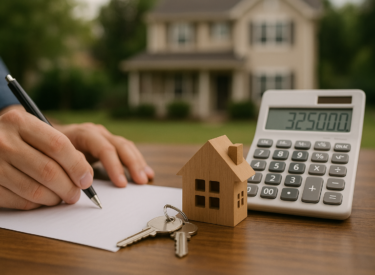The great Australian dream of home ownership is still alive and well, even among the emerging generations.
However, analysis of the largest 7 capital cities in Australia shows a clear trend of both house and unit prices growing faster than incomes over the last four decades.
House prices grow faster than wages
From 1981 to 2021, the average full-time total earnings for Australian adults increased 5.9 times, from $15,800 (1981) to $93,500 (November 2021).
Over the same period of time, the lowest property price increase was units in Brisbane, which increased in price by 9.0 times over this period (from just over $48,000 in 1981 to $437,000 by November 2021).
Melbourne house prices experienced the biggest increase over this period, a 22-fold increase, from $44,000 in 1981 to more than $973,000 currently.
When median property prices are converted to average annual incomes, the most affordable units are in Adelaide (4 times annual earnings) and the best-priced houses are in Perth (5.9 times average annual earnings).
Least affordable properties are in Sydney
The least affordable properties of both types are in Sydney with units now 9 times annual earnings, and houses 14.3 times earnings.
In real purchasing power terms, Sydney units are now twice as expensive in relative terms now (9.0x earnings) compared to 1981 (4.3x earnings).
Over the same period of time, Sydney houses have become almost three times as expensive in relative terms (from 5x annual earnings in 1981 to 14.3x today).
Gen Z thinking strategically about home ownership
Despite economic challenges, Gen Z harbour ambitions to enter the housing market.
One third of Gen Z (34%) are in the market for their first home to either live in or as an investment property, 29% aspire to own a property in the future and 11% are in the market for another property.
Of those in the market for a property, 58% of Gen Z aspire to own a free-standing home, 21% aspire to purchase an apartment or unit, while 12% are looking for land to secure.
The factors which matter most to Gen Z when thinking about purchasing property are affordability (44%) and suburb or location (27%).
When thinking about barriers for first home buyers, 37% of Gen Z agree that high property prices is the biggest barrier, and 35% agree cost of living pressures are also a big barrier.
In fact, three in five Gen Z (61%) strongly or somewhat agree that most young people can only enter the property market with financial support such as help from parents, highlighting the means necessary to achieve home ownership.
They are also considering unconventional routes to enter the housing market.
Almost two in five (37%) Gen Z would be extremely or very likely to purchase a property with family members such as a sibling or parent.
Similarly, more than one third of Gen Z non-owners (33%) would be extremely or very likely to purchase a property with friends to split the cost (compared to 17% Gen Y, 12% Gen X and 6% Baby Boomers).
Despite all of the barriers acknowledged by Gen Z, of those looking to purchase a property now or in the future, half of Gen Z (49%) are still extremely or very hopeful about entering the housing market.
















